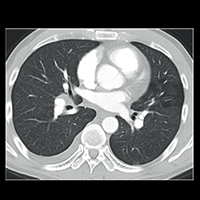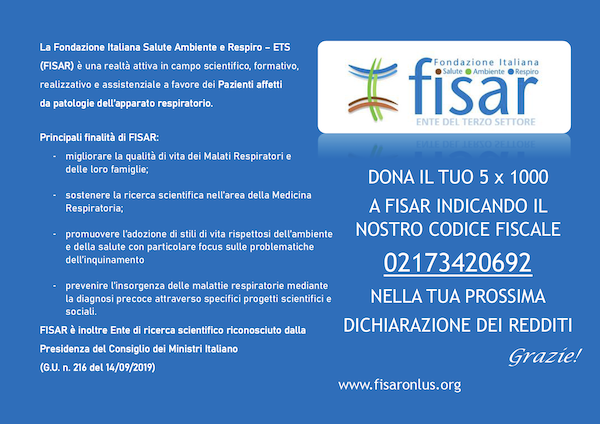A case of Pneumocystis jirovecii pneumonia in a patient with acquired immune deficiency syndrome who showed eosinophilia and an increased serum TARC/CCL17 level
Keywords:
Pneumocystis jirovecii pneumonia, acquired immune deficiency syndrome, eosinophilia, eosinophilic pneumonia, TARC/CCL17Abstract
Pneumocystis jirovecii pneumonia (PCP) in patients with acquired immune deficiency syndrome (AIDS) shows eosinophilic pneumonia like condition. The detailed mechanisms how AIDS-associated PCP causes eosinophilic pneumonia has not been elucidated, but it has been suggested that beta-D-glucan, a major component of Pneumocystis jirovecii, and T helper type 2 immunity may be involved in the mechanism of eosinophilia in the lung. We experienced the case who developed an eosinophilic pneumonia-like condition in a patient with AIDS-associated PCP, whose clinical course indicated the importance of TARC/CCL17 but not IL-4 and IL-5 as involved in eosinophilia caused by HIV and Pneumocystis jirovecii infection.
References
Becker Y. The changes in the T helper 1 (Th1) and T helper 2 (Th2) cytokine balance during HIV-1 infection are indicative of an allergic response to viral proteins that may be reversed by Th2 cytokine inhibitors and immune response modifiers--a review and hypothesis. Virus Genes 2004;28:5-18.
Mayar M, Erick W, Roberto A, Thomas G, Jose S. Eosinophilia and associated factors in a large cohort of patients infected with human immunodeficiency virus. South Med J 2014;107:554-8.
Ohji H, Shinohara T, Kadota N, Okano Y, Naruse K, Iwahara Y, et al. Pneumocystis jirovecii pneumonia in an HIV-infected patient mimicking acute eosinophilic pneumonia: a case report with a review of the literature. J Thorac Dis 2018;10:E774-e8.
Allen JN, Davis WB, Pacht ER. Diagnostic significance of increased bronchoalveolar lavage fluid eosinophils. Am Rev Respir Dis 1990;142:642-7.
Fleury-Feith J, Van Nhieu JT, Picard C, Escudier E, Bernaudin JF. Bronchoalveolar lavage eosinophilia associated with Pneumocystis carinii pneumonitis in AIDS patients. Comparative study with non-AIDS patients. Chest 1989;95:1198-201.
Kawayama T, Fujiki R, Honda J, Rikimaru T, Aizawa H. High concentration of (1-->3)-beta-D-glucan in BAL fluid in patients with acute eosinophilic pneumonia. Chest 2003;123:1302.
Hansa H, Kibeten T, Teklu G, Hagos G. How common is eosinophilia in tuberculosis? Case Report. Pediatric Health Med Ther 2020;20:59-63.
Yonghong F, Hongyun Y, Guangliang M, Ling M, Heping X, Zhongyi H. Elevated serum levels of CCL17 correlate with increased peripheral blood platelet count in patients with active tuberculosis in China. Clin Vaccine Immunol 2011;18:629-32.
Miyazaki E, Nureki S, Ono E, Ando M, Matsuno O, Fukami T, et al. Circulating thymus- and activation-regulated chemokine/CCL17 is a useful biomarker for discriminating acute eosinophilic pneumonia from other causes of acute lung injury. Chest 2007;131:1726-34.
Malhotra P, Haslett P, Sherry B, Shepp DH, Barber P, Abshier J, et al. Increased plasma levels of the TH2 chemokine CCL18 associated with low CD4+ T cell counts in HIV-1-infected patients with a suppressed viral load. Sci Rep 2019;9:5963.
Bonecchi R, Bianchi G, Bordignon PP, D'Ambrosio D, Lang R, Borsatti A, et al. Differential expression of chemokine receptors and chemotactic responsiveness of type 1 T helper cells (Th1s) and Th2s. J Exp Med 1998;187:129-34.
Yi S, Zhai J, Niu R, Zhu G, Wang M, Liu J, et al. Eosinophil recruitment is dynamically regulated by interplay among lung dendritic cell subsets after allergen challenge. Nat Commun 2018;9:3879.

Published
Issue
Section
License
Copyright (c) 2022 The Author(s)

This work is licensed under a Creative Commons Attribution-NonCommercial 4.0 International License.
Mattioli 1885 has chosen to apply the Creative Commons Attribution NonCommercial 4.0 International License (CC BY-NC 4.0) to all manuscripts to be published.





